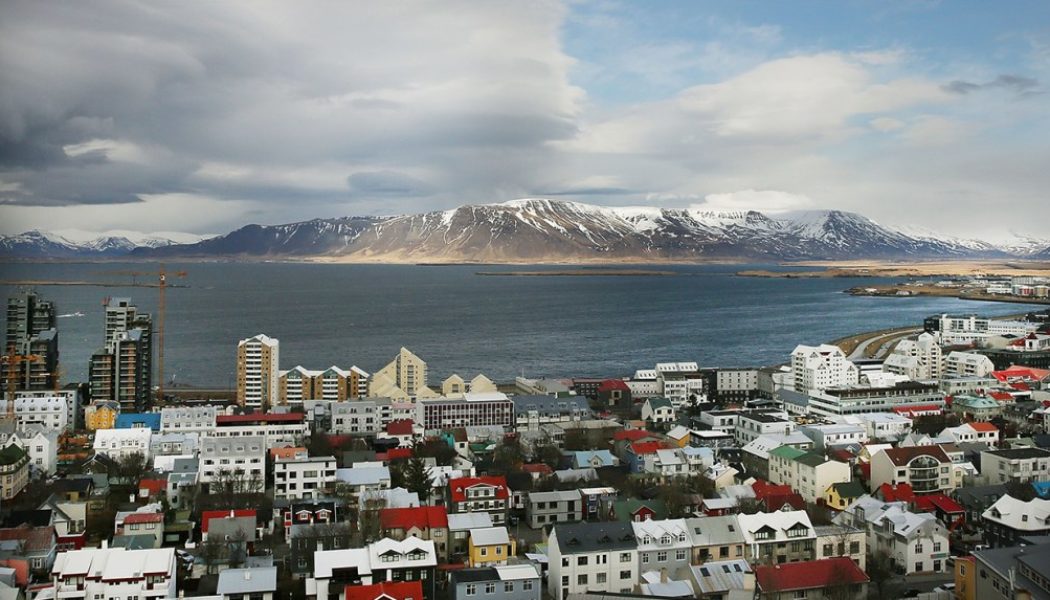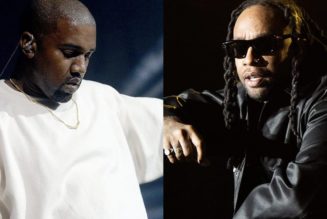
Over the past few years, we have been living in a music business in which, it’s often said, hits can come from anywhere around the world. Often, however, the hits we’re talking about have musical and production elements of pop, hip-hop and R&B — only with a twist or in another language. This is great. Unless you want the world to sound a little weirder, in which case it’s still great but you might wonder what else is out there.
As it happens, there’s a country that often seems to specialize in arty, off-kilter music — Iceland. Ever since the Sugarcubes emerged as what we used to call “college rock” darlings in the late 1980s, the Nordic country has exported more than its share of adventurous music: Björk, who emerged from the Sugarcubes as a solo act; Sigur Rós; Gus Gus, and more recently Laufey and Daði Freyr. (I originally heard this as “Daddy Feyr,” which says something about how our musical world is shrinking — but it’s actually his given name.)
The challenges of exporting acts from Iceland are significant: Few international music companies have offices there, the language isn’t spoken much outside the island, and there isn’t exactly much of a touring market in a country of 372,000 — far fewer people than saw Taylor Swift in Los Angeles this year. One of the important investors in the music business there is actually the government.
Last week, at the Iceland Airwaves festival and conference in Reykjavík, I got some sense of how that works and saw some a handful of Icelandic acts that could build solid global careers. (The festival flew me to Reykjavík to moderate a panel, with no expectation that I would cover the event, and I didn’t plan to do so.) None of them sound like they’re chasing the next streaming hit, which I found refreshing.
Since 2006, in fact, former Sugarcubes drummer Sigtryggur Baldursson has played a significant role in the international marketing of Icelandic music — first as part of Iceland Music Export, then since 2012 as managing director for its successor organization, Iceland Music. The organization coordinates grants and provides support for acts “to help people market music from here on their own terms,” Baldursson says. “We help labels and independent artists market their music better, but also to create better support for it.”
The direct results have been encouraging. But music has also helped brand Iceland, drawing tourists to a country with a vital culture as well as beautiful landscapes and hot springs. Björk is the most famous person in the country — by a kilometer.
Starting in January, Iceland is amping up its efforts. During the pandemic lockdown, the music business created a coalition to lobby the government for support, which eventually resulted in the creation of a new office that will fold two smaller organizations into the existing Iceland Music. As part of that change, Baldursson will step down as CEO in favor of María Rut Reynisdóttir. “The establishment of the new office,” Reynisdóttir says, “is a major milestone for the Icelandic music scene.”
All of the Nordic countries have “music export” organizations, and the ones in Finland and Norway are bigger because there’re less private investment in music than in Denmark and Sweden. “Formally opening the music center is an important milestone for music and musicians in this country,” says Lilja Dögg Alfreðsdóttir, Minister of Culture and Business Affairs. (Iceland, uniquely as far as I can tell, has one combined ministry for both business and culture.) “The music center can become one of the cornerstones of music life and industry.”
It’s hard to imagine this kind of government investment in music in the U.S., where it would quickly become a political clusterf—, with the disciples of Kid Rock facing off against those of Maren Morris. European countries are also more accustomed to public funding of the arts, including television and high culture institutions like opera. This isn’t necessarily the best solution overall — the U.S. still drives pop culture. But it works for them. One reason the U.S. drives pop culture is that it’s a big enough, rich enough country that private investment can pay off.
That’s one reason smaller countries subsidize their culture businesses — so they don’t get overwhelmed. France, famously, protects its film business, and many countries have radio airplay regulations that reserve a certain amount of time for local artists. Iceland even funds its book business to prevent local-language literature from being swamped by English authors.
That kind of thinking puts Iceland in an interesting situation. On one hand, most of the country’s pop music isn’t in Icelandic — it limits the potential audience. But much of it still has a certain spare kind of artiness — what’s Icelandic for je ne sais quoi? It’s often pop but not poppy, arty but not inaccessible. It’s too diverse to be considered a definable style but much of it has a certain aesthetic.
Iceland Airwaves is also a music festival, so I was able to check out some artists as well. Along with some acts from elsewhere, I enjoyed the off-kilter pop of local star Briet, the haunting electronic soundscapes of Kónguló, and, especially, the furiously arty punk of Gróa, which reminded me of the Raincoats.
Realistically, their combined potential to go viral seems pretty low, but that’s fine — Baldursson points out that most Icelandic acts depend more on playing live, anyway. These kinds of acts, Baldursson says, “they shoot from here out into the stratosphere.”








